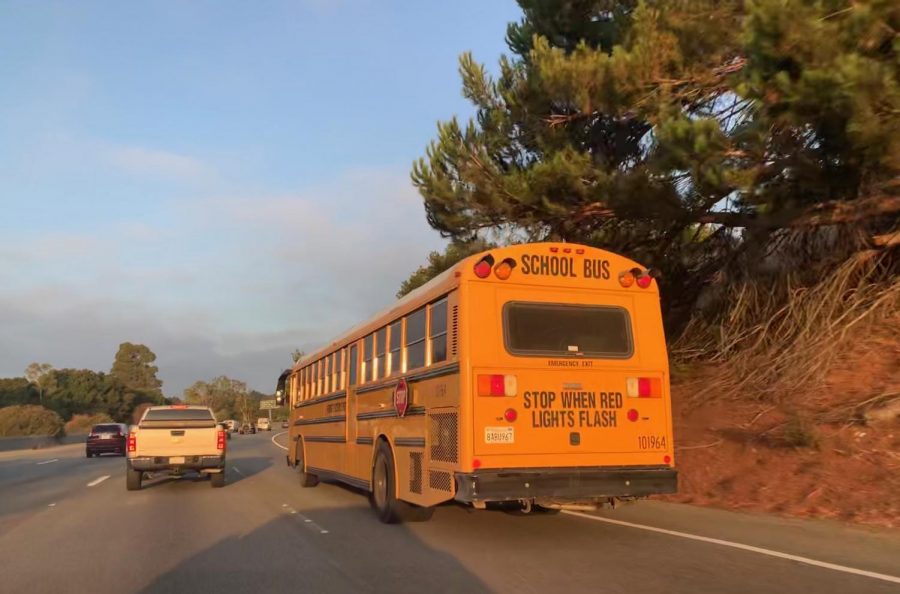Overcrowded Bus Route Gains Additional Bus
The Los Altos and Cupertino bus drives students to school on the I-280 highway at 7:50 in the morning. Staff Photo: Shefali Sahai.
October 22, 2019
As of Oct. 8, Menlo School has addressed the issue of overcrowding on the Los Altos and Cupertino bus route by assigning two buses instead of one to serve both these towns. First Student buses are technically designed to carry a maximum of 63 students each, however, that is not realistic given how much space backpacks and other gear take up. Overcrowding is not a significant problem on the other three bus routes, but it has been a more prevalent issue for the Los Altos and Cupertino bus as there are 77 sign-ups for that route this year, which is ten more than last year. The increase is largely due to more Menlo families living in these neighborhoods, according to Director of Sustainability Kevin Conner.
“After 40 or more students, we start to have an issue of overcrowding in the mornings. Right now on the Los Altos and Cupertino bus, it is on the borderline because some days there are over 40 students and some days there are under 40,” Connor said. He takes this problem seriously and has introduced another bus on that route to encourage more students to use alternate forms of transportation. This will ensure that there are less cars on the road, and will also benefit the environment because overall less fossil fuels will be burned.
Conner is also working on implementing a tracking app for the buses, allowing parents, students, administrators and faculty to view the location of the buses in real time to gauge whether they are late. There is an existing app called FirstView that was created by First Student, and there are a few schools such as Valley Christian that are already using it. However, according to the description of the FirstView app in App Store, “FirstView is only available to a small number of school districts, but [First Student is] working hard to offer it to as many districts as possible.” Conner is hopeful that the Menlo community can start using this app by mid-November.
Menlo is trying to improve their bus system to reduce overcrowding on the nearby streets and for sustainability reasons. “The goal is to get as many families out of their individual cars and into alternative forms of transportation. We are trying to make that as easy as possible by offering options,” Conner said. Though buses are known to have a fuel efficiency of six to nine miles per gallon compared to the average of 25 miles per gallon for cars, each bus can take up to 40 cars off the road and is overall more environmentally friendly. Currently, there is a total of 115 students that take the bus every morning, which is that many less cars.
Sophomore Madison Liu takes the bus from Los Altos almost every morning and understands this issue. “Although more environmentally sustainable, it turns a 25 minute car ride into a 45 minute bus ride. But I understand that it is way better for the environment [rather] than everyone taking separate cars, so that is a sacrifice I’m willing to make,” Liu said. The bus that Liu takes from Los Altos will also be faster by about 15 minutes now that it can take the I-280 highway because the route has been split in two.
Many students feel that they are helping out their parents by avoiding a long commute while also helping the environment. Sophomore Marcus Ying, who also takes the Los Altos and Cupertino bus every morning, said, “I feel like I’m doing the right thing when I take the bus because I’m doing what I can to reduce fossil fuels and prevent climate change.”



